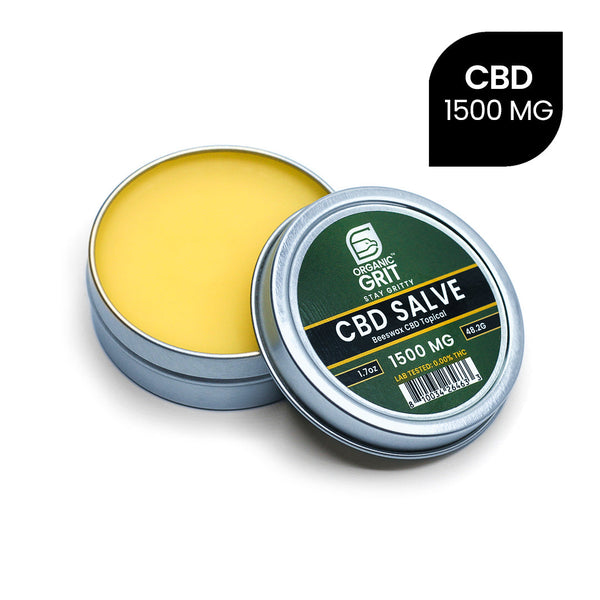CBD, short for cannabidiol, has gained significant popularity in recent years for its potential therapeutic benefits.
As more people explore CBD as a natural remedy, questions arise about how long it stays in the body.
Understanding the duration of CBD's presence in our system is essential for various reasons, such as drug testing and determining appropriate dosages.
In this blog post, we will delve into the factors influencing CBD's longevity in the body and provide insights into its elimination timeframes.
Factors Affecting CBD Absorption and Elimination

Dosage and Administration Method: The dosage and method of administration significantly impact the time it takes for CBD to leave your system.
Different consumption methods, such as oral ingestion, inhalation, or topical application, have varying absorption rates and elimination times.
For instance, inhalation generally provides faster effects but has a shorter duration compared to oral ingestion.
Individual Metabolism: Individual metabolic rates play a crucial role in determining how long CBD stays in the body. Factors like age, weight, and overall health influence the efficiency of the liver's enzymes responsible for metabolizing CBD.
A faster metabolism may result in quicker elimination of CBD from the system.
Frequency of Use: The frequency and duration of CBD use also impact its elimination time. Regular users tend to build up a cumulative level of CBD in their bodies over time, which might prolong its presence.
Conversely, sporadic use is more likely to result in shorter elimination times.
CBD Product Variations: The CBD market offers a wide range of products with varying CBD concentrations and compositions.
Full-spectrum CBD products contain additional compounds like THC, while broad-spectrum and isolate products are THC-free.
THC is known to be stored in fat cells and can be detected in drug tests. Consequently, the presence of THC can affect the elimination time of CBD.
Estimated Timeframes for CBD Elimination

Although individual experiences may vary, several studies provide general guidelines for estimating CBD's elimination timeframes:
Single Use: For infrequent users who have consumed CBD only once, the compound is likely to leave the body within 1-2 days.
However, this estimate may vary depending on factors such as dosage, administration method, and individual metabolism.
Regular Use: Regular CBD users may experience a longer elimination time. It can take approximately 3-7 days for CBD to be cleared from the system.
Again, this estimate is influenced by various individual factors.
High-Dose Use: In cases of high-dose CBD consumption, it might take more time for the body to eliminate the compound.
Studies suggest that CBD can remain detectable for up to a week or longer in individuals who have consumed large doses of CBD.
Duration of CBD in Different Systems
While CBD's presence in the body can vary depending on the factors mentioned above, it generally follows a specific timeline in different systems:
Bloodstream: When CBD enters the bloodstream, it is carried to various parts of the body, interacting with the endocannabinoid system.
The concentration of CBD in the bloodstream peaks within 1 to 2 hours after consumption. However, the duration of CBD's effects in the bloodstream is relatively short-lived, typically ranging from a few hours to a day.
Urine: CBD metabolites are primarily eliminated through urine. The detection of CBD in urine can vary depending on factors such as dosage, frequency of use, and individual metabolism.
In general, CBD may be detectable in urine for up to 3 to 7 days after the last use. However, this detection window can be extended for heavy or chronic users.
Hair: CBD can be detected in hair follicles for a more extended period compared to other testing methods.
Hair tests can detect CBD usage for up to 90 days or even longer, depending on the length of the hair sample collected.
Saliva: CBD can also be detected in saliva for a limited period, typically up to 72 hours after use.
However, it's worth noting that the reliability and accuracy of saliva tests for CBD are still being researched and developed.
Certainly! Here's a section highlighting the non-detectable THC aspect of your broad-spectrum CBD salve:
Broad Spectrum CBD Salve: Will it Pop Up on a THC Test?
One of the primary concerns for individuals exploring CBD products is the potential presence of THC, the psychoactive compound found in cannabis.
However, with our 1500MG Broad Spectrum CBD Salve, you can enjoy the benefits of CBD without worrying about THC.
Unlike full-spectrum products, which contain trace amounts of THC along with other cannabinoids, our broad-spectrum formula is carefully crafted to remove even the slightest traces of THC while retaining the beneficial compounds found in hemp.
This means that you can experience the synergistic effects of multiple cannabinoids and terpenes without any risk of psychoactive effects or failing a drug test due to THC.
Our commitment to transparency and quality is reinforced by third-party lab testing, conducted at an ISO Certified and GMP accredited facility in Denver, Colorado.
These tests confirm that our salve contains non-detectable levels of THC, providing peace of mind for individuals who may be subject to drug testing.
Whether you're an athlete, a professional in a THC-sensitive workplace, or simply someone who prefers to avoid THC altogether, our Broad Spectrum CBD Salve offers a reliable solution for targeted relief without compromising on purity or potency.
The Bottom Line
Understanding how long CBD stays in your system is essential for various reasons, including employment-related drug tests and managing CBD's therapeutic effects.
While individual factors influence the duration of CBD's presence, it is generally detectable in the bloodstream for a few hours to a day, in urine for up to 3 to 7 days, in hair for up to 90 days, and in saliva for up to 72 hours.
It's crucial to note that these time frames are general estimates, and individual variations can occur.
It's also important to mention that CBD itself is non-intoxicating and does not produce the psychoactive effects associated with tetrahydrocannabinol (THC), another prominent cannabinoid found in cannabis.
However, some CBD products may contain trace amounts of THC, which can potentially accumulate in the body over time.
It's always recommended to consult with a healthcare professional or trusted CBD provider for accurate information regarding CBD use and drug testing.
Citations:
-
Huestis, M. A. (2007). Human Cannabinoid Pharmacokinetics. Chemistry & Biodiversity, 4(8), 1770-1804. doi: 10.1002/cbdv.200790152
-
Millar, S. A., Stone, N. L., & Yates, A. S. (2018). A Systematic Review on the Pharmacokinetics of Cannabidiol in Humans. Frontiers in Pharmacology, 9, 1365. doi: 10.3389/fphar.2018.01365
-
Taylor, L., Gidal, B., & Blakey, G. (2020). Cannabidiol (CBD) for Treatment of Neurological Disorders: Recent Advances and Future Directions. Frontiers in Pharmacology, 12, 595. doi: 10.3389/fphar.2021.666999
-
Vandrey, R., Raber, J. C., Raber, M. E., Douglass, B., & Miller, C. (2017). Cannabinoid Dose and Label Accuracy in Edible Medical Cannabis Products. JAMA, 318(17), 1708-1709. doi: 10.1001/jama.2017.11909
-
Ujvary, I., & Hanus, L. (2016). Human Metabolites of Cannabidiol: A Review on Their Formation, Biological Activity, and Relevance in Therapy. Cannabis and Cannabinoid Research, 1(1), 90-101. doi: 10.1089/can.2015.0012
-
Prandi, C., Blanckaert, P., Fornaroli, V., & Charlier, P. (2019). Identification of the Main Urinary Metabolites of 7-ethoxyresorufin O-deethylase (EROD) Substrates by Liquid Chromatography High Resolution Mass Spectrometry. Drug Testing and Analysis, 11(7), 947-956. doi: 10.1002/dta.2633







Comments (0)
There are no comments for this article. Be the first one to leave a message!